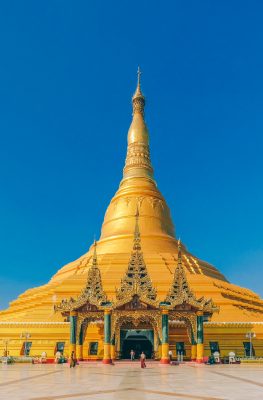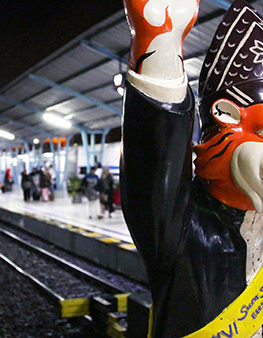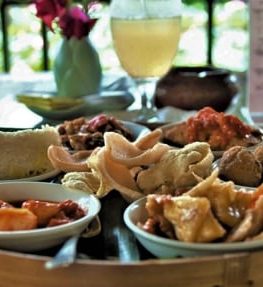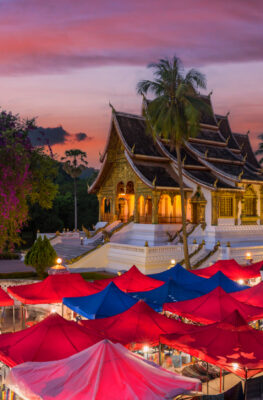Published on August 18, 2017

Tana Toraja, Indonesia. Image courtesy of Mike Aquino
Singapore’s Marina Bay, Thailand’s Grand Palace and Cambodia’s Angkor Wat draw in visitors for a reason: they’re beautiful, representative of the local culture, and plastered over every tourist brochure you can pick up at a travel agency.
But sticking to Southeast Asia’s Top 10 Hits does a disservice to the less well-trodden paths in Southeast Asia. The latter are a little out of the way, true, but they have just as much authenticity and magic as the region’s more popular stops, with a lower price tag and less of the touts and tourist crowds that arguably ruin the travel experience.
Chris Backe, the blogger behind One Weird Globe, knows all about seeing the region beyond the picture painted by tourist brochures. He had some useful advice to offer the traveler looking to follow in his footsteps.
Q: What kind of traveler might get the most out of visiting Southeast Asia’s off-the-beaten-path sites?
Chris: All of them! Budget travelers will appreciate lower admission costs (which can also be free). Families will love not having to be around crowds or expensive souvenir stands selling sodas. Couples and solo travelers already like going their own way and just need to be aware of what’s worthy.
The only kind of traveler I know of that wouldn’t appreciate getting offbeat are those on a packaged group / guided tour. To you, I’d encourage you to think of travel as a more interactive story where you are a participant in your destiny, versus a bystander that has everything shown to you.
Q: While places like Angkor Wat remain popular with tourists, the high tourist volume might turn off some travelers. How do you suggest a traveler get up the courage to explore less well-traveled sites?
Chris: A good question to ask yourself: why do you want to go to Angkor Wat, specifically? Are you really interested in mentioning your travels to friends, or is this the best place to see an area’s ancient history? Or is this the only touristy place you can name in Cambodia? Be honest, especially with yourself.
A lot of times this is like going to the grocery store. You get to the potato chip aisle and you pause. Obviously you’re buying chips, but brand name or generic? Which flavor? Is the brand name really worth paying two or three times the price of the generic ones? Google something like ‘angkor wat alternatives’ and you’ll quickly discover plenty of options for your trip.
Q: What tips would you share for travelers who want to explore Southeast Asia’s less-well-known sites, but don’t know where to start?
Chris: Start reading and researching. Expect to spend at least one hour of researching for every day of your trip. Offbeat places don’t often give their secrets up easily, after all. I’d start with Atlas Obscura (a great site that focuses on the offbeat and weird side of traveling) and Google searches like ‘what’s weird in [CITY]’. Jump on my site, obviously, and look for other bloggers as well.
Q: Can you explore Southeast Asia’s less well known areas even if you don’t know the local language?
Chris: Absolutely! I spent two years across Thailand and barely got past ‘hello’, ‘thank you’, and the numbers. (I’m not proud of that, mind you, but learning languages was never a strong subject.) Google Maps is your friend, as is an ability to mime or sound things out.

Wat Rong Khun, Thailand. Image courtesy of Phil Blackburn / Creative Commons
Q: Which were your most memorable off-the-beaten-path sites in Southeast Asia, and what made them memorable/fun for you? Which ones were the weirdest?
Chris: The hell temples in Thailand are definitely memorable, though they’re sometimes falling apart! These are Buddhist temples that aim to show what life is like in Buddhist hell while your karma is being worked out.
Few have any English signage, and my understanding is that they’re not designed as ‘tourist destinations’… though they’ll happily take your donations all the same. The concrete statues and red-colored paint emphasize the specific punishments for your crimes, and it’s not a place I’d take kids. Most blog posts are marked NSFW as well.
Another fun place (and worthy daytrip) is the Ayutthaya sword village, where they make tons of swords and other crafts. Look for the giant fork and spoon for a fun photo-op, or consider picking something up (just remember not to pack it in your carry-on!)
* * * *
Are you looking to see more of Southeast Asia off the beaten path? We’d like to suggest a few more places to put on your itinerary:
- Ulu Temburong, Brunei: go deep into the Bornean jungle by boat and by 4×4 vehicle, and explore the rainforest canopy on a walk suspended several dozen feet off the jungle floor! Read about Ulu Temburong here.
- Tana Toraja, Indonesia: the Torajans of the South Sulawesi highlands brew some of the world’s best coffee, and follow a unique funerary culture you have to see to believe. Read about Tana Toraja here.
- Pyu Ancient Cities, Myanmar. The Ancient Cities of Halin, Beikthano and Sri Ksetra near the Irrawaddy River don’t see many visitors, but their recent entry into the UNESCO World Heritage list may change all that. Read more about the Pyu Ancient Cities here.
Khone Phapheng, Laos. Located in southern Laos, the Khone Phapheng waterfalls cascades mightily down a 10-kilometre stretch of the Mekong River, a breathtaking display of the power of nature. Read more about the Khone Phapheng Waterfalls here






